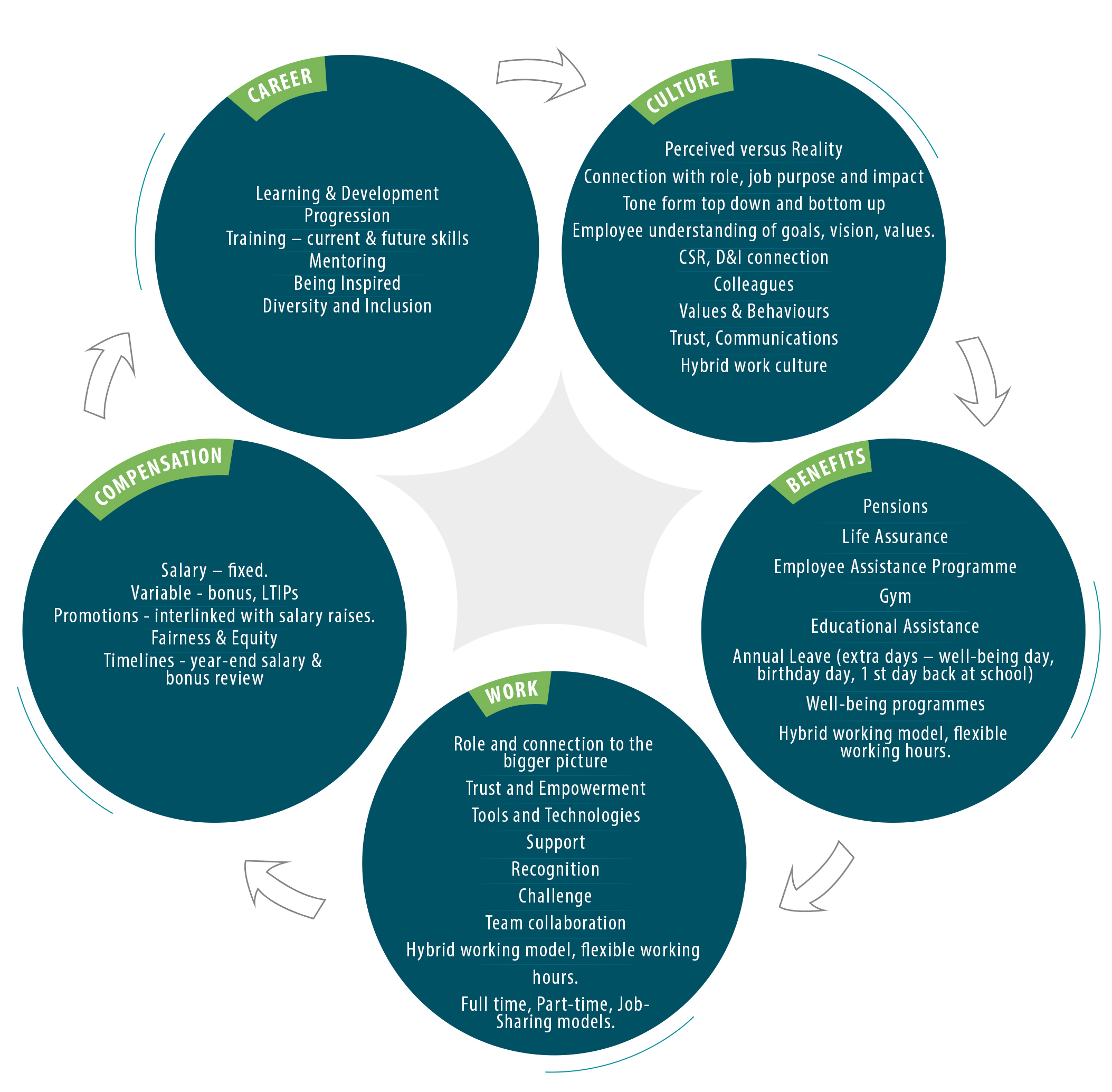
Blog
The forever balancing act of keeping an EVP relevant and attractive.

In Ireland and internationally, workforces have been through some of the most dramatic paces of change ever experienced over the past 3 years since Covid. Employers have adapted hugely their EVP, to the changing dynamics and expectations between the employer and employee working environments and working relationships.
When deployed and embedded correctly into an everyday working environment and culture, an EVP effects an employer’s ability to draw talent to their firm and most importantly retain and upskill current and future talent and if you get this balance correct, it’s a win- win for all.
I often remember a quote by Richard Branson saying “Clients do not come first. Employees come first. If you take care of your employees, they will take care of the clients.
It’s true in many ways, for the key ingredients to work towards ensuring an employee “people” centric culture and allowing a “client centric” culture of delivery to flourish, it’s good to remind ourselves of the critical pillars and benefits of a holistic EVP offering.
An effective EVP captures what matters most to your current and future employees, a combination of an inclusive and attractive company and work culture, career growth opportunities, compensation, and wellbeing benefits. The connection of an employee’s job purpose, the company’s purpose, and its key outputs for their end customers, be it creating a product or service that employees are proud to be part of, is key.
An EVP combines the three “Cs” – Culture, Career, Compensation along with Work and Benefits.
All equally important, like the muscle of the heart, an EVP has to keep beating at the heart of organisation every day to make it real and for employees to feel linked to a company’s purpose, brand and be proud of their output, regardless of what part the value chain they are key too. An ongoing challenge and opportunity for any employer but when you aim to achieve the best you can, the rewards from an employee engagement, loyalty and long term vision to be part of that employer – employee journey is quite something.

.png?sfvrsn=a2668976_1)
Under each of these EVP pillars, there is a huge amount for company leaders to contend with. If we take just two elements - hybrid working model and "future" skills development, the challenge for employers is vast.
Covid has created a huge focus on leadership styles, inclusive styles being key to deploy well an EVP. Across many surveys, what is important and often top of the list for employees is culture, which embodies also communication and leadership styles. Career and learnings and with this, feeling valued, trusted and supported in terms of their work outputs, be it from an office or home office location. Leaders face huge challenges, with needing to adapt across four, if not five different generations, across diverse multifunctional and disciplinary teams, different genders and identities and different cultural heritages to name a few, combined with leading their teams often through a hybrid working environment.
Almost every day across multiple news feeds, LinkedIn posts, we’re seeing surveys, polls on the ideal hybrid working models and what employees want. One well known “future of work activist” and thought leader Tony Jamous, recently posted poll results in mid-February ‘23 by the National Bureau of Economic Research, which captured data and trends of the wellbeing benefits employees felt with working from home. His posting of this survey alone, received 4.5 million views, over 47,000 likes and over 3,000 reposts. This one post shows how strong employee workforces feel about voicing their views and preferences on hybrid working models, the benefits they feel it brings and this is a conversation that is likely to continue for many years ahead.
What we see from our clients going into 2023, is that employers seem to be evolving towards an ideal 3 days from office with 2 days home office.
One key driver it seems, with trying to encourage people from 2 days in office to 3 days in office is centred with “future workforce skills” in mind. When we’re contending with multi-generational employee cohorts, skills and talent shortages and focusing on how we capitalise best (from generation Z and other generations) the benefits of re-skilling and upskilling employees and the knock-on benefits of virtual versus onsite working and learning environments via our EVP offerings, here lies a big challenge for many on what is the best model.
Will more days onsite, where employees are learning differently and at times by osmosis, using different sensory and observational skills that support different abilities to emulate and shadow styles, approaches from different team members, develop enhanced softer and technical long-term skills?
How valuable will it be to have real time opportunities to ask those impromptu questions… re-develop more face- to-face networks and relationships and different communication skills beyond the virtual meeting rooms. The question of lost opportunities to learnings, needs to be asked and how to develop a long-term hybrid working model that brings effective returns on both working and learning environments.
The balance to be struck with your 2023 effectiveness of your EVP, maximising your hybrid working model that embraces critical L&D and future skills building (not losing sight of the importance of softer skills either) we can see as being a key focus us all in 2023 and beyond.

